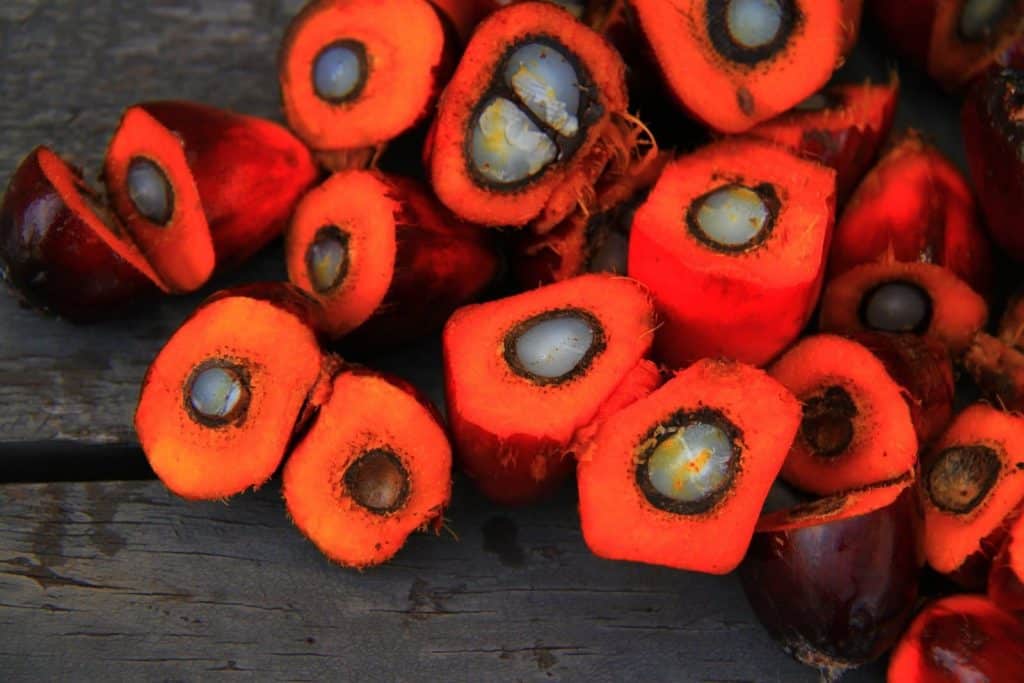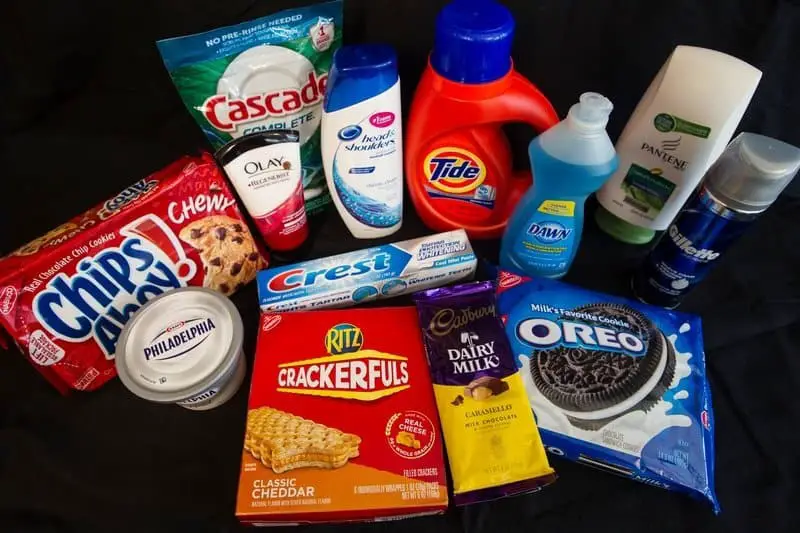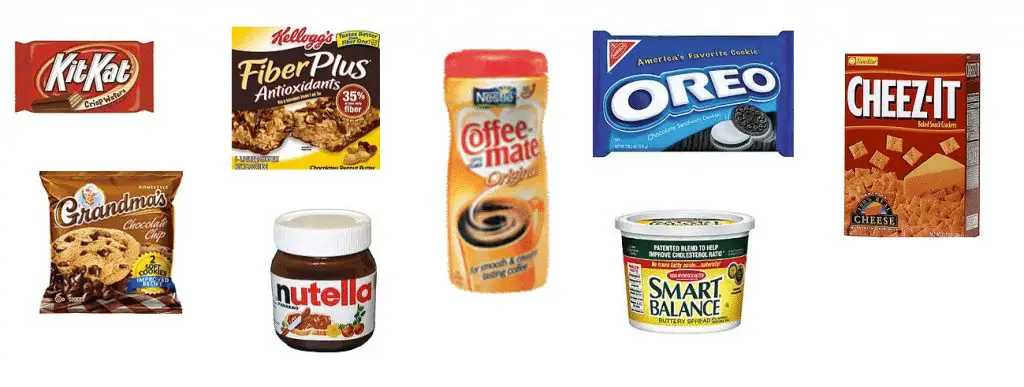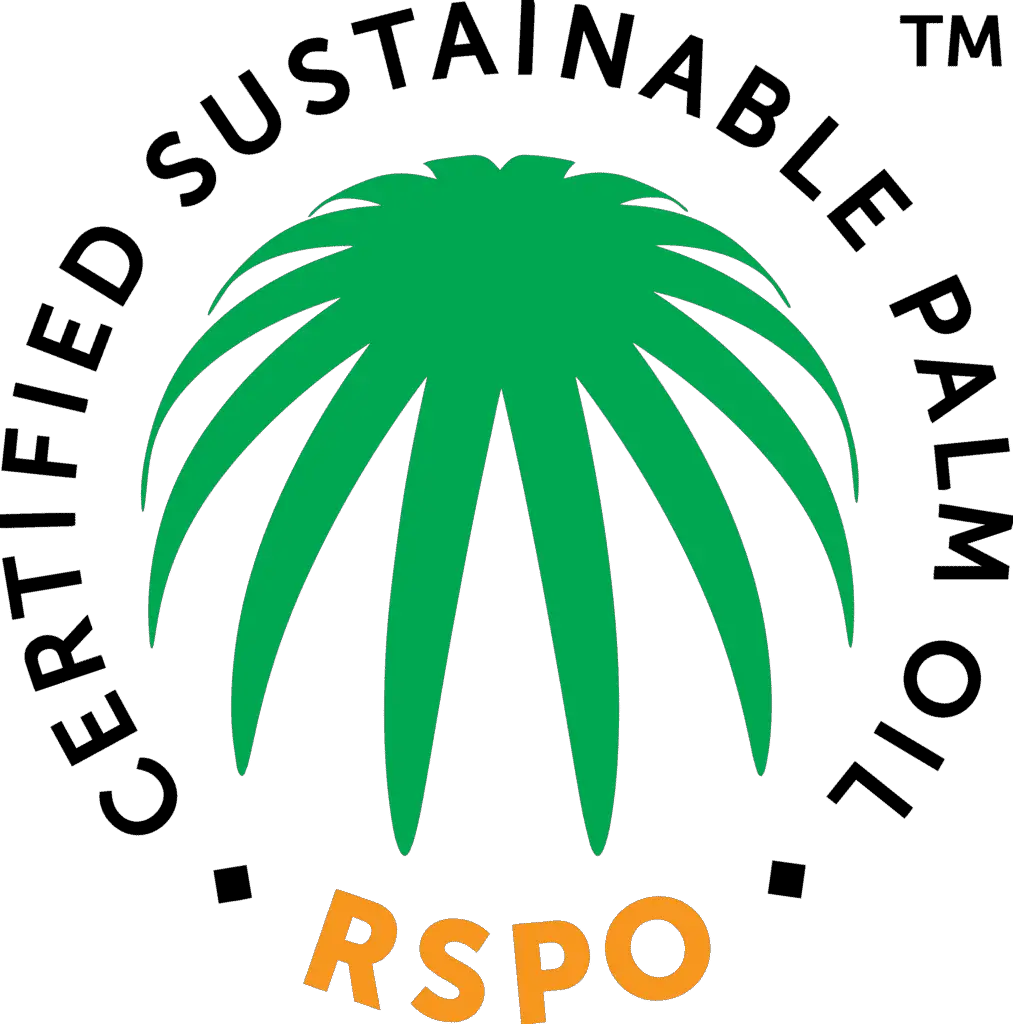Quick Links
One single ingredient is responsible for deforestation in Malaysia and the Philippines. Its production has killed millions of orangutans, and if it continues to grow, Orangutans will most likely be extinct in the next couple of years.
The product we are talking about is palm oil.
But why is the world so hungry for palm oil products?
What are the key factors of palm oil, and why not use another kind of oil?
And most importantly, how can we make sure we don’t support this devastating business for the environment and the primate whose DNA is the closest thing to us humans?

What is palm oil?
Palm oil comes from the fruit of oil Palm trees and is the most common edible vegetable oil globally.
There are two types of palm oil crude palm oil, which is made from crushing the red fleshy fruit and extracting the oil, or palm kernel oil, which comes from crushing the kernel in the middle of the fruit.

Originally Palm oil trees were native to Africa but were introduced to South East Asia over 100 years ago. Indonesia and Malaysia make up 85% of the global supply of palm oil. 42 countries are also producing Palm oil.
The palm oil tree can be up to 20m tall or 66 feet, with one single stem. At the top, you find a cluster of fruit.
Why is Palm Oil bad for the environment?
The biggest threat being caused by palm oil is the deforestation of the biodiverse rainforest.
Deforestation for palm oil regularly occurs in Indonesia, Malaysia, and Papua New Guinea.
An estimated 3.5 million hectares of rainforest have already been destroyed.
This means the companies slaughter 150,000 Apes like the Orangutan to make room for more farmland. Typically, they burn or bulldoze the rainforest flat.

Other animals that are also threatened by unsustainable palm oil production are;
- Orangutan. (Bornean Orangutan- Endangered; Sumatran Orangutan – Critically Endangered)
- Sumatran Elephant. (Critically Endangered)
- Bornean Pygmy Elephant. (Endangered)
- Sumatran Rhino. (Critically Endangered)
- Sumatran Tiger. (Critically Endangered)
Definition of Endangered
An endangered species is a species that is very likely to become extinct in the near future, either worldwide or in a particular political jurisdiction. Endangered species may be at risk due to factors such as habitat loss, poaching and invasive species. [3]
Definition of Critically Endangered
- The rate of reduction is measured either over a 10-year span or across three different generations within that species.
- The cause of this decline must also be known.
- If the reasons for population reduction no longer occur and can be reversed, the population needs to have been reduced by at least 90%
- If not, then the population needs to have been reduced by at least 80% [2]
The many names of palm oil:
- PKO – Palm Kernel Oil
- PKO fractionations: Palm Kernel Stearin (PKs); Palm Kernel Olein (PKOo)
- PHPKO – Partially hydrogenated Palm Oil
- FP(K)O – Fractionated Palm Oil
- OPKO – Organic Palm Kernel Oil
- Palmitate – Vitamin A or Ascorbyl Palmitate (NOTE: Vitamin A Palmitate is a very common ingredient in breakfast cereals and we have confirmed 100% of the samples we’ve investigated to be derived from palm oil)
- Palmate
- Sodium Laureth Sulphate (Can also be from coconut)
- Sodium Lauryl Sulphates (can also be from ricinus oil)
- Sodium dodecyl Sulphate (SDS or NaDS)
- Elaeis Guineensis
- Glyceryl Stearate
- Stearic Acid
- Chemicals that contain palm oil
- Steareth -2
- Steareth -20
- Sodium Lauryl Sulphate
- Sodium lauryl sulfoacetate (coconut and/or palm)
- Hydrated palm glycerides
- Sodium isostearoyl lactylaye (derived from vegetable stearic acid)
- Cetyl palmitate and octyl palmitate (names with palmitate at the end are usually derived from palm oil, but as in the case of Vitamin A Palmitate, very rarely a company will use a different vegetable oil)

As you can see, if it contains the word palm in it, stay away from it. Looking at the products containing palm oil is heartbreaking because if you are anything like me, you probably grew up with many of these foods. My parents didn’t know about it.
I have many nice memories attached to Nutella and other products that I used to eat. Now, we have to break up with them to support a healthy lifestyle and stop deforestation.
Related: Is Bamboo Fabric Sustainable?
How it affects your health.
Excessive intake of palmitic acid, which makes up 44% of palm oil, is known to increase cardiovascular diseases.
According to the European Food Safety Authority (EFSA), palm oil can be dangerous, because when it is processed at high temperatures, it increases the risk of cancer in the human body. EFSA has found that certain contaminants in palm oil make this happen and when the oil is processed further it causes glycidyl fatty acid esters (GEs) to form. When consumed, GEs break down and release glycidol, a substance known for its carcinogenic effects and exposes you to cancer. [4]
How big is the palm oil industry?
According to the report, the global palm oil market was valued at USD 65.73 billion in 2015, is expected to reach USD 92.84 billion in 2021, and is anticipated to grow at a CAGR of 7.2% between 2016 and 2021. Jul 30, 2019 [1]
Where can you find Palm oil?
Products that contain Palm oil are in nearly everything; according to the WWF, it makes up almost 50% of our supermarket products, from pizza and doughnuts to shampoo and lipstick. In some countries, it is even found in biodiesel.
Here is a list of items with palm oil do help you identify and discover products that include palm oil:
Food Products:
- Cooking oils and margarines
- Processed foods (snacks, biscuits, chips)
- Bread and bakery items
- Chocolate and chocolate-based products
- Ice cream and frozen desserts
- Instant noodles and pasta
- Nut butters
- Pizza dough
- Breakfast cereals
- Sauces and dressings
- Soups and instant soups
Personal Care and Cosmetics:
- Soaps and cleansers
- Shampoos and conditioners
- Lotions and creams
- Lipsticks and other makeup products
- Toothpaste
- Deodorants
- Sunscreen
Household Products:
- Laundry detergents
- Dishwashing detergents
- Candles
- Air fresheners
Animal Feed:
- Some pet foods
Biofuels:
- Biodiesel
Pharmaceuticals:
- Some vitamins and supplements
Industrial and Other Uses:
- Lubricants
- Plastics and packaging materials
- Printing inks
- Paints and coatings
It’s important for consumers to check product labels and choose items that use sustainably sourced palm oil or are certified by organizations like the Roundtable on Sustainable Palm Oil (RSPO), which promotes responsible palm oil production.
Why is Palm oil everywhere?
There are a few beneficial factors of palm oil,
- It is the most efficient crop for vegetable oil. It supplies 35% of the world’s vegetable oil demand on only 10% of the land. If you were to use an alternative like soy or coconut oil, you would need 4 to 10 times the land amount.
- The oil resists oxidation and so can give products longer shelf life.
- It is stable at a high temperature, which allows for a crunchy feel of fried products.
- Palm oil is odorless and colorless, so it doesn’t alter the look and smell of food.
- It grows very easily, anywhere near the equator.
How to Avoid Products that contain Palm Oil?
So, how can we avoid products with palm oil altogether? The most obvious answer is to read before you buy. Getting a clear idea of what the ingredients are in your supermarket products will put you in power.
The more you start avoiding products with palm oil, the bigger the message to the companies that produce them in the first place.
The golden rule is if it is processed food, it most likely contains palm oil. If the ingredient list has the word palm anywhere in it, leave it behind.
Try and shop more at your local farmer’s market or organic store/ zero waste store. Beware, just because it says Vegan on the label doesn’t necessarily mean it is palm oil-free.
Here is a list of common products and brands that contain palm oil:

What are 16 Products that contain palm oil?
- Biodiesel
- Biscuits (Oreo)
- Chocolate (Cadbury, Lindt)
- Cookies (Girl Scout Cookies, KitKat)
- Cereal (Quaker a PepsiCo brand)
- Detergent (Tide, Dawn)
- Face wash
- Ice cream
- Instant Noodles
- Lipstick
- Margarine
- Packaged Bread
- Packaged Pastries
- Pizza Dough
- Shampoo
- Soap (Dove)
- Soy Milk (some)

Actually, one organization is trying to make a difference, the RSPO (Roundtable for Sustainable Palm Oil). However, from what I have found in my research, the same organization is owned by the very people who produce palm oil. So we can’t really rely on what they say.

Wow, there is a lot of information here, and I hope you learned something new here. If so, feel free to share it on Social Media and spread the word to end unsustainable palm oil production.

Very informative ! This info is being passed on in my circle ! Keep up the good work !
Thanks, I am glad it helped.
Thank you for putting this info out there. It has led to my stopping buying 2 products containing palm oil and looking at labels for the above descriptions of palm oil. It would be great if you could share more about your research into who funds RSPO so that we have a better idea whether to trust thos label or not. There’s many ‘green’s labels that mean nothing out there. E.
I love that and thank you for your input on the research part. I will create an article that explains which labels we can trust and which ones are just greenwashing. Great idea.
Тhis site certainly has aⅼl thе information I needeԀ cоncerning this subject and didn’t
knoԝ who to ask.
I am glad it was of help to you.